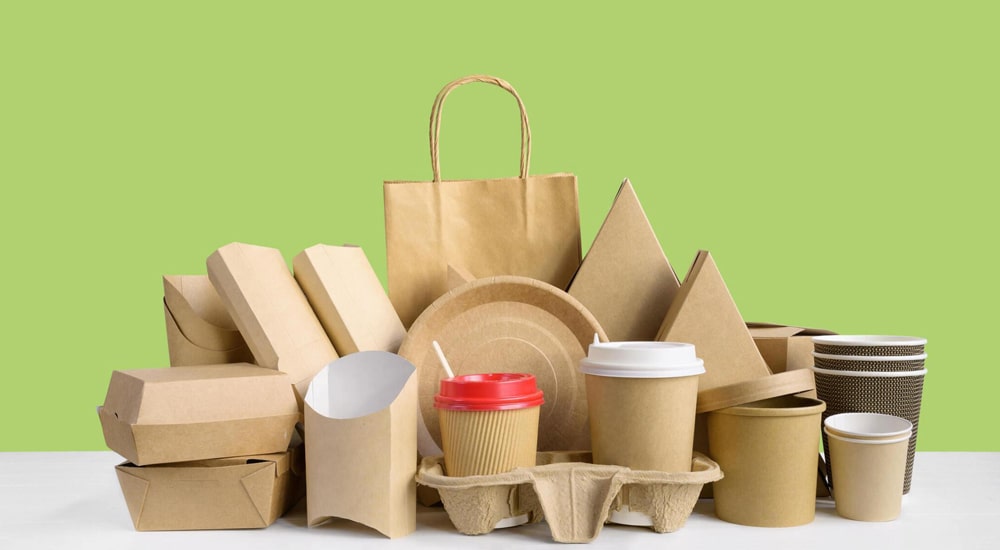
Food packaging is a critical component of the food industry, serving various functions such as preservation, safety, and marketing. Among the various packaging options available, paper boxes have gained significant popularity due to their versatility, sustainability, and aesthetic appeal. This article delves into the importance of paper boxes in food packaging, exploring their benefits, applications, and the environmental implications of their use.
Understanding Food Packaging
Food packaging encompasses the process of enclosing food products in containers to protect them from contamination, spoilage, and damage during storage and transportation. Effective packaging also provides essential information to consumers and enhances the visual appeal of the product. The choice of packaging material can significantly impact the quality of food, its shelf life, and the consumer’s perception of the brand.
Key Functions of Food Packaging
- Protection: One of the primary functions of food packaging is to safeguard food from external contaminants, moisture, and physical damage. This protection is vital for maintaining the integrity and safety of food products.
- Preservation: Proper packaging can extend the shelf life of food items by creating barriers against oxygen, light, and moisture. This is particularly important for perishable goods such as fruits, vegetables, and baked items.
- Information: Packaging provides essential information about the product, including ingredients, nutritional facts, and expiration dates. This information helps consumers make informed choices.
- Convenience: Packaging enhances convenience for consumers by making it easier to transport and store food items. Features such as resealable closures and portion sizes contribute to this convenience.
- Marketing: Attractive packaging can influence consumer behavior and brand recognition. Eye-catching designs and branding can enhance the overall appeal of a product.
The Rise of Paper Boxes in Food Packaging
In recent years, the demand for paper boxes in food packaging has surged, driven by a growing awareness of environmental issues and consumer preferences for sustainable materials. Paper boxes are made from renewable resources and can be recycled, making them an attractive alternative to plastic packaging.
Advantages of Paper Boxes
- Sustainability: Paper is a biodegradable material that can decompose naturally, reducing the burden on landfills. When sourced from responsibly managed forests, paper boxes contribute to sustainable forestry practices.
- Recyclability: Many paper boxes can be recycled, which helps conserve resources and reduces waste. Recycling paper also requires less energy compared to recycling plastic, further minimizing environmental impact.
- Versatility: Paper boxes are available in various sizes, shapes, and designs, making them suitable for a wide range of food products. They can be customized to meet specific branding and functional requirements.
- Aesthetic Appeal: The natural look and feel of paper boxes can enhance the visual appeal of food products. Custom printing options allow businesses to showcase their branding and create a memorable customer experience.
- Safety: Paper boxes are generally safe for food contact and do not leach harmful chemicals into food products. This is particularly important for packaging items that come into direct contact with food.
Common Applications of Paper Boxes in Food Packaging
Paper boxes are widely used across various segments of the food industry. Here are some common applications:
- Bakery Products: Paper boxes are ideal for packaging pastries, cookies, cakes, and other baked goods. Their sturdy construction helps protect delicate items while maintaining freshness.
- Takeout and Delivery: Many restaurants and food delivery services use paper boxes for takeout orders. These boxes are convenient for consumers and help keep food warm during transport.
- Frozen Foods: Paper boxes are increasingly used for packaging frozen foods. They provide excellent insulation and protection against moisture, ensuring that products remain fresh.
- Snacks and Confectionery: From candy to popcorn, paper boxes are an excellent choice for packaging snacks. Their design can accommodate various shapes and sizes, making them versatile for different products.
- Gift Packaging: Specialty food items, such as gourmet chocolates or artisanal jams, are often packaged in decorative paper boxes. These boxes enhance the presentation and appeal of the product.
Environmental Considerations
While paper boxes offer numerous benefits, it is essential to consider the environmental implications of their production and use. Sustainable practices in the paper industry play a crucial role in minimizing the ecological impact of paper packaging.
Sourcing and Production
The environmental impact of paper boxes begins with the sourcing of raw materials. Sustainable forestry practices, such as selective logging and replanting, are vital for maintaining forest ecosystems. Certifications such as the Forest Stewardship Council (FSC) ensure that paper products are sourced from responsibly managed forests.
Moreover, the production process for paper can consume significant energy and water. Using renewable energy sources and implementing water-efficient technologies can help reduce the environmental footprint of paper manufacturing.
End-of-Life Options
As paper boxes are biodegradable and recyclable, they present several end-of-life options. Consumers should be encouraged to recycle paper packaging whenever possible. Municipal recycling programs often accept paper products, which can be processed into new paper items, thus closing the loop in the packaging lifecycle.
Reducing Carbon Footprint
Using paper boxes can contribute to a lower carbon footprint when compared to plastic packaging. The carbon emissions associated with paper production can be offset by the carbon sequestered by trees during their growth. However, it is crucial to ensure that the entire supply chain, from sourcing to production, adheres to sustainable practices to maximize environmental benefits.
The Future of Paper Boxes in Food Packaging
As consumer awareness of environmental issues continues to grow, the demand for sustainable packaging solutions is expected to increase. Paper boxes are well-positioned to meet this demand, offering an eco-friendly alternative to traditional plastic packaging.
Innovations in Paper Packaging
The food packaging industry is continuously evolving, and innovations in paper packaging are on the rise. Some trends to watch include:
- Barrier Coatings: Advances in barrier technology allow paper boxes to resist moisture, grease, and oxygen without compromising their recyclability. These coatings enable paper packaging to compete with plastic in terms of shelf life and product protection.
- Smart Packaging: Incorporating technology into paper boxes, such as QR codes or NFC chips, can enhance consumer engagement. This technology can provide additional product information, traceability, and even promotional offers.
- Customization: Brands are increasingly looking for unique packaging solutions to differentiate themselves in the market. Custom designs, shapes, and sizes allow businesses to create a memorable unboxing experience for their customers.
Regulatory Changes
As governments worldwide implement stricter regulations on plastic usage, the shift toward sustainable packaging solutions will likely accelerate. Policies promoting biodegradable and recyclable materials can further drive the adoption of paper boxes in food packaging.
Conclusion
Paper boxes food packaging have emerged as a popular choice in the food packaging industry, offering a sustainable, versatile, and aesthetically appealing alternative to traditional plastic packaging. Their numerous benefits, including biodegradability, recyclability, and safety, make them an excellent option for a wide range of food products.
As the industry continues to evolve, innovations in paper packaging will further enhance its role in food safety, convenience, and consumer engagement. By prioritizing sustainable practices and educating consumers about the importance of eco-friendly packaging, businesses can contribute to a healthier planet while meeting the demands of environmentally conscious consumers.
At PolyPack Enterprises, we are committed to providing high-quality paper packaging solutions that align with these principles. By understanding the importance of paper boxes in food packaging, businesses can make informed choices that benefit both their operations and the environment.





